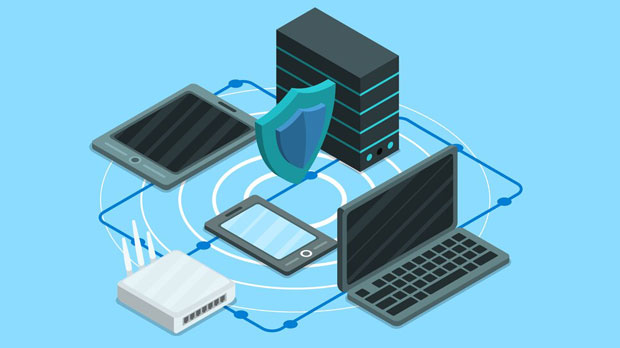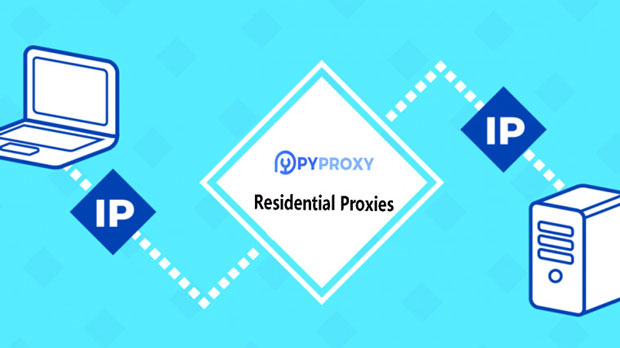In the world of online privacy and security, proxies play a crucial role in masking a user's internet traffic and protecting their sensitive data. Among the various types of proxies, SOCKS5 and HTTPS proxies are two of the most commonly used protocols. While both serve the purpose of acting as intermediaries between users and the websites they visit, they differ significantly in their functionalities and use cases. SOCKS5 is a versatile protocol that can handle any kind of internet traffic, including both TCP and UDP, making it a highly flexible solution for various needs. On the other hand, HTTPS proxies focus on securing web traffic by encrypting it, ensuring that data sent between the user and the server remains private and safe from interception. Understanding the differences between these two protocols is essential for users who want to choose the right proxy for their specific requirements. 1. What is a Proxy?Before diving into the differences between SOCKS5 and HTTPS, it is essential to understand what a proxy is. A proxy server acts as an intermediary between a user's device and the internet. When a user connects to the internet through a proxy server, their requests are routed through the server before reaching the destination website. The proxy server can modify, hide, or filter the traffic, providing benefits such as enhanced privacy, security, and anonymity.Proxies can be classified into several types, including SOCKS5 and HTTPS proxies, each serving different purposes and offering varying levels of security and performance.2. Understanding SOCKS5 ProtocolThe SOCKS5 protocol is a versatile proxy that can handle any type of internet traffic. Whether the traffic is related to web browsing, peer-to-peer file sharing, or even online gaming, SOCKS5 can route it without issues. SOCKS5 operates at a lower level than HTTPS and HTTP proxies, meaning it doesn’t care about the type of data being transmitted. It merely forwards the data from one endpoint to another, making it a flexible and efficient choice for a variety of use cases.Some key features of SOCKS5 include:- Protocol Independence: SOCKS5 can handle both TCP and UDP traffic, making it suitable for applications beyond just web browsing. It is often used for tasks such as torrenting and online gaming, where UDP traffic is prevalent.- No Data Modification: SOCKS5 does not alter or inspect the data being sent through it, ensuring that the user’s information remains untouched and private.- Authentication Support: SOCKS5 supports authentication, allowing users to secure their connection by requiring a username and password to access the proxy server.3. Understanding HTTPS Proxy ProtocolHTTPS, which stands for Hypertext Transfer Protocol Secure, is an extension of the HTTP protocol that adds a layer of security through encryption. An HTTPS proxy server is designed specifically to handle secure web traffic by encrypting the data that flows between the user's device and the destination server. This encryption ensures that sensitive information, such as passwords and credit card numbers, is kept private and cannot be intercepted by third parties.Some notable characteristics of HTTPS proxies include:- Data Encryption: HTTPS proxies provide encryption for the data being sent between the user and the server, ensuring that sensitive information remains protected from hackers and surveillance.- Web Traffic Focus: HTTPS proxies are primarily designed to handle web traffic, meaning they are most useful for securing data transmitted over the internet through browsers or web applications.- SSL/TLS Encryption: HTTPS proxies use SSL/TLS protocols to establish a secure connection between the client and the server, which is essential for preventing man-in-the-middle attacks.4. Key Differences Between SOCKS5 and HTTPS ProxiesNow that we have a basic understanding of each protocol, let’s examine the key differences between SOCKS5 and HTTPS proxies in greater detail.4.1 Traffic Types and VersatilityOne of the most significant differences between SOCKS5 and HTTPS proxies is the types of traffic they can handle. SOCKS5 is a highly versatile proxy that supports a wide range of protocols, including TCP, UDP, and even FTP. This versatility makes it suitable for a variety of applications beyond just web browsing, such as peer-to-peer file sharing and online gaming.In contrast, HTTPS proxies are designed specifically to handle web traffic over the HTTP/HTTPS protocols. While HTTPS proxies are great for encrypting web browsing and securing data sent between a web browser and a website, they are not as flexible as SOCKS5 when it comes to handling other types of traffic.4.2 Data Security and EncryptionWhen it comes to security, HTTPS proxies have a clear advantage. They encrypt the data being sent between the client and the server using SSL/TLS protocols, ensuring that sensitive information remains private and secure. This is particularly important when dealing with online banking, shopping, or other activities that involve sensitive personal information.On the other hand, SOCKS5 does not provide encryption by default. While SOCKS5 can be used with additional encryption methods, it is not inherently secure. This means that while SOCKS5 is useful for maintaining privacy, it does not offer the same level of protection for sensitive data as HTTPS proxies.4.3 Performance and SpeedIn terms of performance, sock s5 proxies are generally faster than HTTPS proxies. This is because SOCKS5 does not perform any encryption or decryption of the data, which can result in lower latency and faster connection speeds. If performance is a priority, especially for activities like online gaming or streaming, SOCKS5 may be the better option.On the other hand, HTTPS proxies can experience some slowdown due to the overhead of encrypting and decrypting data. While this is essential for security, it can slightly reduce performance, especially on slower connections or when handling large amounts of data.4.4 Use CasesSOCKS5 proxies are ideal for users who need flexibility and speed. Since they can handle a wide variety of internet traffic, they are commonly used for tasks such as torrenting, gaming, and bypassing network restrictions. However, users should be aware that SOCKS5 does not provide encryption by default, so it may not be the best option for those who require strong security for their sensitive data.HTTPS proxies, on the other hand, are best suited for users who prioritize security and privacy, especially when browsing the web or conducting financial transactions online. They are perfect for securing sensitive communications and preventing third-party interception of web traffic.Both SOCKS5 and HTTPS proxies serve important functions in the world of internet privacy and security. SOCKS5 is a flexible and versatile protocol that handles a wide range of traffic types, making it ideal for users who need speed and flexibility. However, it does not provide encryption by default, so it may not be the best choice for securing sensitive data. HTTPS proxies, on the other hand, are specifically designed to encrypt web traffic, ensuring that sensitive information remains private and secure. However, they are not as versatile as SOCKS5 and may experience slower performance due to the encryption process.Ultimately, the choice between SOCKS5 and HTTPS depends on the specific needs of the user. If privacy and encryption are a priority, HTTPS proxies are the better choice. If versatility and speed are more important, SOCKS5 may be the way to go.
Jun 23, 2025



































































